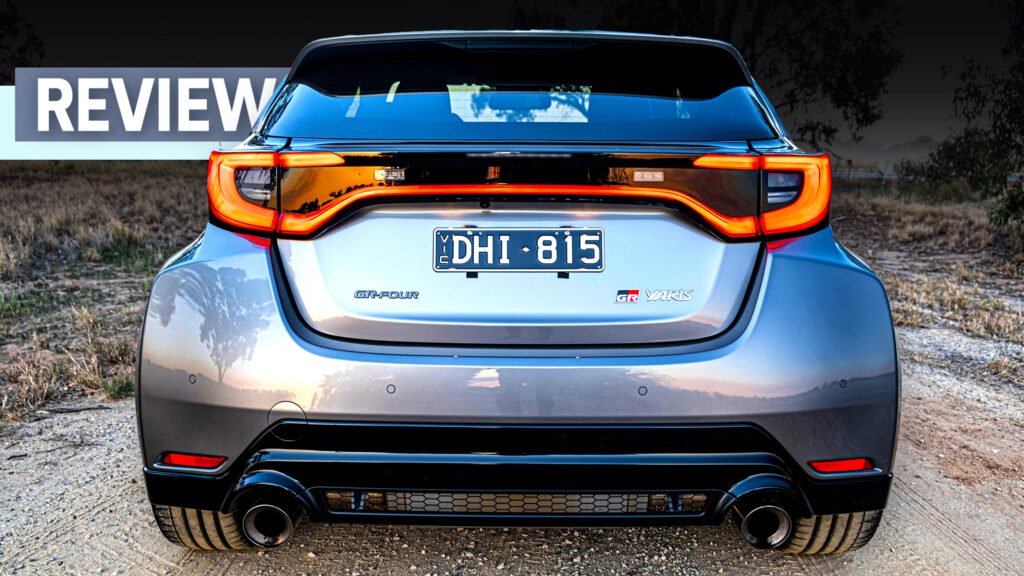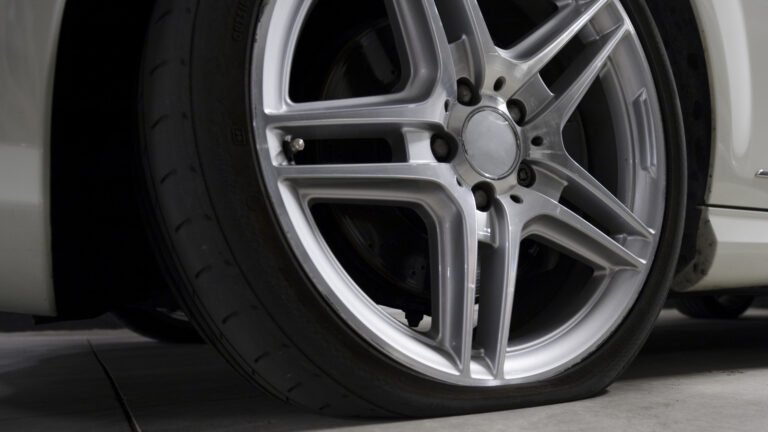

When Toyota dropped the GR Yaris in 2020, it wasn’t just another hot hatch. It was a full-throttle wake-up call to the entire segment, reminding everyone that performance and passion can still exist in a small package. Think of it as the industry’s equivalent of someone shouting “Wake up!” at a sluggish meeting. The GR Yaris, with its rally-inspired roots, brought the heat in a way that hadn’t been seen since the 2015 Ford Focus RS.
With a highly-strung 1.6-liter turbocharged three-cylinder, a bespoke two-door shell, and a platform incorporating elements from the regular Yaris and the Corolla, the GR Yaris proved to be an instant hit. Now, it has been updated for the 2025 model year with more aggressive styling, an extra dose of power, and an overhauled interior.
What was arguably the best hot hatch on the market now promises to be even better. But does it really live up to that claim? That’s exactly what we’re here to find out.
QUICK FACTS
SWIPE
Photos Brad Anderson/Carscoops
The Goodies
When first launched in Australia back in 2020, the GR Yaris was available in a standard guise and a limited-run version known as the ‘Rallye’, capped at just 250 units. This Rallye version came equipped with all the same upgrades found in the Circuit Pack offered in overseas markets, including stiffer suspension, lighter wheels, and most importantly, limited-slip differentials at both the front and rear axles.
Both cars proved hugely popular, but understandably, the Rallye was the better pick of the two. In updating the GR Yaris for 2025, Toyota has named the base version the GT, and the Rallye has morphed into the GTS, but importantly, production of it is no longer limited.
The GTS comes with a host of upgrades, including red brake calipers, two limited-slip differentials (LSDs), 18-inch forged BBS wheels, revised suspension, and grippy Michelin Pilot Sport 4S tires. It even features an intercooler spray system, just like an old Mitsubishi Evo.

The updates don’t stop there. The buzzing 1.6-liter turbo three-cylinder has been upgraded to the same spec you’ll find in the larger GR Corolla. That means it now delivers 296 hp (221 kW) at 6,500 rpm and 296 lb-ft (400 Nm) of torque between 3,250 rpm and 4,600 rpm, compared to the 268 hp (200 kW) and 273 lb-ft (370 Nm) of the old model.
However, perhaps the most significant single change is on the transmission front. For the first time, the GR Yaris is available with an eight-speed automatic transmission. This new gearbox is offered alongside the same six-speed manual found in the previous model.
With these modifications comes a jump in price. In Australia, the GR Yaris is available from AU$60,798 (~$39,500) for the base GT model and $66,008 (~$42,900) for the GTS.
Photos Brad Anderson/Carscoops
The Interior: Functional, But Could Be Nicer
Everyone loves performance upgrades, but when the new GR Yaris was released, not everyone was sold on the new interior. It’s easy to see why. It’s generally quite unusual for a brand to make such significant changes to a car’s cabin during a mid-cycle facelift, but that’s exactly what Toyota has done, aiming to make the GR Yaris more driver-focused while addressing some of the original’s complaints.
The dashboard has been completely redesigned, and the central stack is now curved towards the driver, ensuring everything is within easy reach. Toyota has also repositioned the rearview mirror slightly higher, improving visibility.
At first glance, the new cabin is quite jarring, but I grew to appreciate its design after a few days. The analog gauge cluster of the old car has been replaced with a 12.3-inch digital display that offers some impressive, motorsport-inspired displays. However, there’s no ignoring the fact that aside from the screens, the cabin of the GR Yaris feels cheap.
Photos Brad Anderson/Carscoops
The new dash, while functional, is made entirely from hard black plastic that feels more fitting of a AU$30,000 (~$19,000) car. The same hard plastic continues across the rest of the dashboard, the pillars, the transmission tunnel, and the door panels. Other than the seats, the steering wheel, and the shifter, there are no soft-touch surfaces in sight. Even the faux suede patches on the door panels sit over solid plastic. For a car that costs this much, Toyota should have made the surfaces feel a little nicer.
On the plus side, the seats have been lowered by 25 mm (1 inch) compared to the old car. However, the seating position is still a little too high for my liking. The seats themselves are good, but not exceptional, and certainly not as comfortable or as supportive as those found in the Honda Civic Type R.
Read: Toyota’s Future GR Sports Cars Will Get Hybrid Turbo Power
The enlarged 8.0-inch infotainment screen offers wireless Apple CarPlay and Android Auto, but other than that, it is extremely bland. The software is devoid of virtually any interesting features or sporty displays, like those found in the Honda or one of Hyundai’s N models.
Of course, you’re probably not that interested in the cabin of the GR Yaris. What you really want to know is how it drives, right? Well, I’m happy to report it’s even better than before.

A Pocket Rocket With Sounds To Match
First up is the engine. Sure, it may only have three cylinders and a 1.6-liter displacement, but this little unit delivers a sound and character that outshines any comparable four-cylinder on the market. Heck, it even sounds more exciting than the inline-six in the Supra. No joke.
Under full throttle, the engine growls, accompanied by a lovely whoosh from the exhaust, making it sound like a proper rally car. There are also some lovely whistles from the turbocharger when you back off the accelerator. It may not have the pops and bangs of an i30 N or a Golf R, but it sounds more like an authentic performance car.
As before, acceleration is impressively strong. While testing the manual, we recorded a best time of 5.0 seconds in the sprint to 100 km/h (62 mph) with a GPS timer. This time dropped to 4.7 seconds with the eight-speed automatic version, which, unlike the manual, includes a launch control system. Make no mistake, this will leave any front-wheel drive competitor for dead off the line, although the auto version doesn’t launch quite as hard as a Golf R.
Photos Brad Anderson/Carscoops
Automatic or Manual? Either Way, It’s a Blast
Speaking of the automatic, it’s actually a pretty great one. Much like it’s easy to dismiss the GR Yaris due to its small engine, it’s equally tempting to overlook the automatic transmission because it’s a traditional torque converter, not a dual-clutch like some rivals. But Toyota has worked its magic on the gearbox, and the result is impressive.
Review: 2021 Toyota GR Yaris Rallye Is The One You Should Go For
The eight-speed provides snappy changes as soon as you pull on the steering wheel-mounted paddles. It’s equally as responsive when left in automatic mode, too, and will quickly and easily find the right gear depending on how you’re driving. Admittedly, it doesn’t shift gears as quickly as the DCT or an i30 N or Golf R, but it is far, far smoother at low speeds.
There’s no jerkiness when cruising around in first gear, nor any hesitation when changing from 1st to 2nd, or 2nd to 1st, as is common with a dual-clutch. The auto should massively broaden the appeal of the GR Yaris. But, it’s worth pointing out the gear changes are not as quick as you’ll find from the ZF eight-speed auto in the GR Supra.
Of course, hardcore driving enthusiasts would be best to opt for the six-speed manual. It has a short, and surprisingly weighty throw, and is a joy to use. It also includes a superb automatic rev-matching function.
Photos Brad Anderson/Carscoops
Handling and Fun Factor
Let’s not forget the all-wheel-drive system. Toyota has changed some of the configurable settings for the GR-Four all-wheel drive system. Previously, it had offered Normal, Track, and Sport settings, providing front-to-rear power splits of 60:40, 50:50, and 30:70, respectively. For 2025, Normal has been retained, but Sport has been changed to Gravel with a 53:47 split. Additionally, Track is now a variable system, intelligently adjusting between 60:40 and 30:70 as needed.
I preferred the old setup, as having a fixed 30:70 front-to-rear power bias allowed you to transform the feel of the car. The Gravel model is cool, but not as useful on a daily basis.

But, despite these adjustments, the GR Yaris still handles as phenomenally as ever. The noise of the Michelin tires may reverberate throughout the cabin at high speeds, but when combined with the Toyota’s beautifully engineered suspension system and the two limited-slip diffs, they provide incredible levels of grip. The light overall weight of the car adds to the thrilling driving experience, and there are few cars out there that are more enjoyable to drive up a mountain road.
Like the old car, the steering is excellent too. It’s not as communicative as a Civic Type R, but it’s well-weighted and offers Normal and Sport settings. Speaking of modes, there are Eco, Normal, Sport, and a Custom driving model. Unfortunately, the Custom mode only lets you tweak the engine response, steering, and air conditioning in the six-speed, while adding an option to tweak the aggressiveness of the transmission in the eight-speed. Most rivals offer more settings to play with.
As with the original GR Yaris, there’s also a proper rally-inspired handbrake that disconnects the rear axle and lets you perform smoky, all-wheel drive donuts.
Photos Brad Anderson/Carscoops
The outright performance of this pint-sized hot hatch is extremely impressive, but, importantly, you don’t have to drive it at ten-tenths to enjoy it. That’s the most significant difference between the GR Yaris and the Civic Type R, for example. Whereas the Honda is relatively tame and uninspiring while puttering around town, the Toyota remains fun to drive at slow speeds, providing far more theater than its Japanese counterpart.
I was also impressed with the ride of the GR Yaris. While it only has fixed dampers, compared to the adjustable ones you’ll find in some rivals, they’ve been nicely tuned and soak up bumps well. It’s more than comfortable enough for daily use. But, adaptive shocks would be nice.
Verdict
There’s no denying that the new GR Yaris is extremely expensive for what amounts to a very small, and very impractical car. However, when you consider the bespoke architecture of the car, its complex four-wheel drive system, and all the sporty add-ons of the GTS model, the sky-high price becomes a little easier to understand.
We’re living in an amazing period of hot hatches at the moment, and the GR Yaris is the finest of them all. It’s blisteringly fast across a small B-road, comfortable enough to be used on a daily basis, looks the business, and provides thrills at all speeds. Had it been equipped with a slightly more premium cabin, it would be virtually faultless.
Photos Brad Anderson/Carscoops


